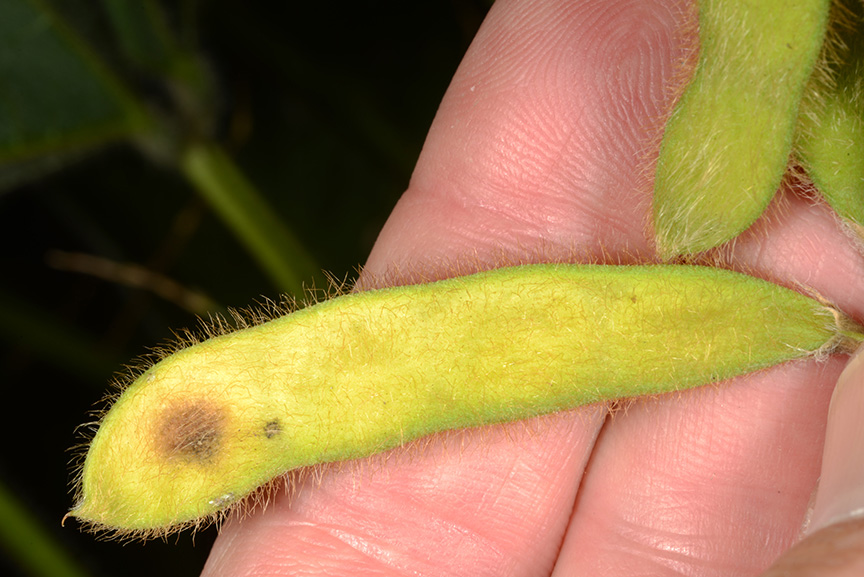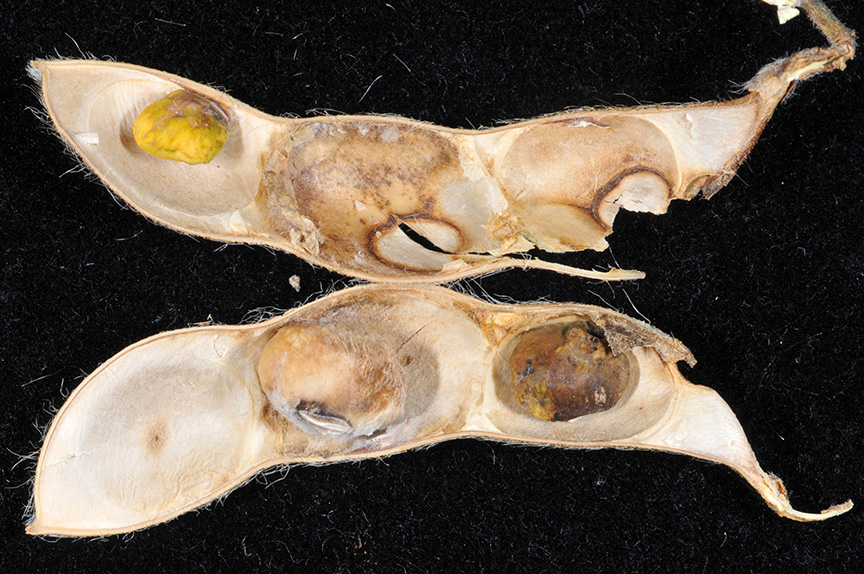Combines are rolling and wagons of grain are heading for dryers and storage. Already, questions have been received about soybean seed observed to be shrunken and/or discolored. Too, we typically get samples through the Purdue Plant and Pest Diagnostic Lab during harvest of seeds and asked to determine, which, if any, insect pest caused the damage. Bottom line…we need unharvested, damaged pods with the sample.
For the last couple of years, there has been a noticeable population of green stink bug in some Indiana soybean fields. Both green stink bug adults and nymphs feed using their piercing-sucking mouthparts. They cause injury to soybean by puncturing pods and sucking fluid from the developing beans. This feeding also introduces bacteria, fungi and yeasts that may cause further damage. Seeds that do develop despite stink bug pod feeding may be smaller, shriveled, and/or discolored. This damage may lower quality, and ultimately reduce yields. Green stink bug may appear in soybean fields from mid July through harvest time. Although stink bugs are a key pest of soybeans in the southern US and South America, i.e., redbanded stink bug, we don’t generally have treatable infestations in Indiana.
Bean leaf beetle is a pest that producers have contended with since legume crops were first introduced into Indiana. This pest has multiple generations per year, feeding on vegetative portions of soybean, then switching to green pods as the foliage senesces. Bean leaf beetle scar the surface of pods with their chewing mouthparts, but only occasionally feed through the pod to the developing seed. During pod maturation, the remaining protective membrane cracks leaving an entry hole for moisture and airborne plant pathogens that may cause discolored, moldy, shriveled, or diseased beans. Too, this damage may lower quality, and ultimately reduce yields.
If you would like suspected stink bug or bean leaf beetle damage to be inspected after senescence, that is after the insects are gone, please enclose whole pods, not just the seed with samples. To submit a sample to Purdue’s Plant and Pest Diagnostic Laboratory, click HERE. Consider, that pod splitting and/or diseases may also be causing, or contributing, to damaged seed found during harvest. Again, including pods with your samples will help the multiple specialists that will inspect these!

Bean leaf beetle foliage and pod feeding.

Stink bug damage to pod.

Mature pod showing stink bug seed damage (left) and bean leaf beetle seed damage (right two).


